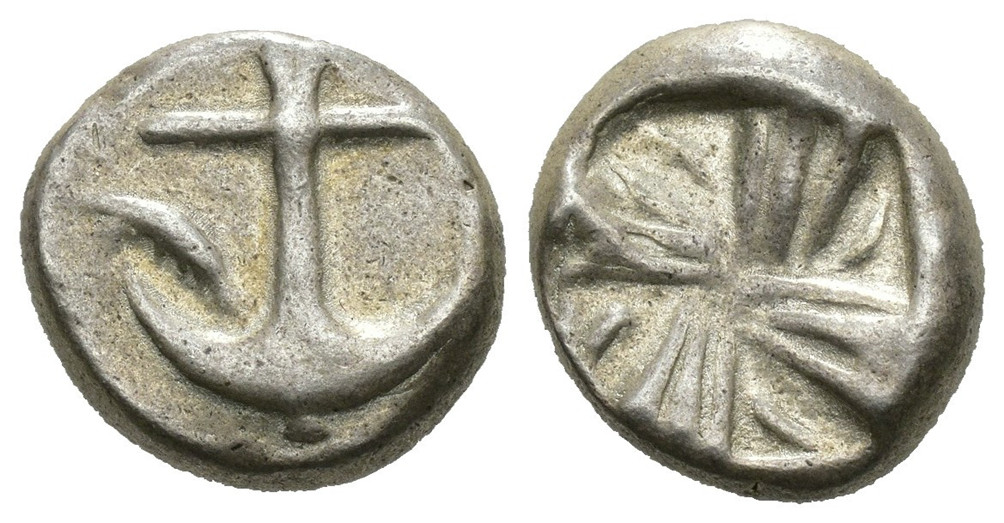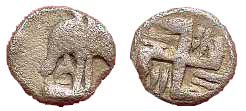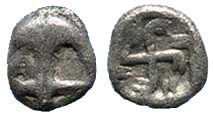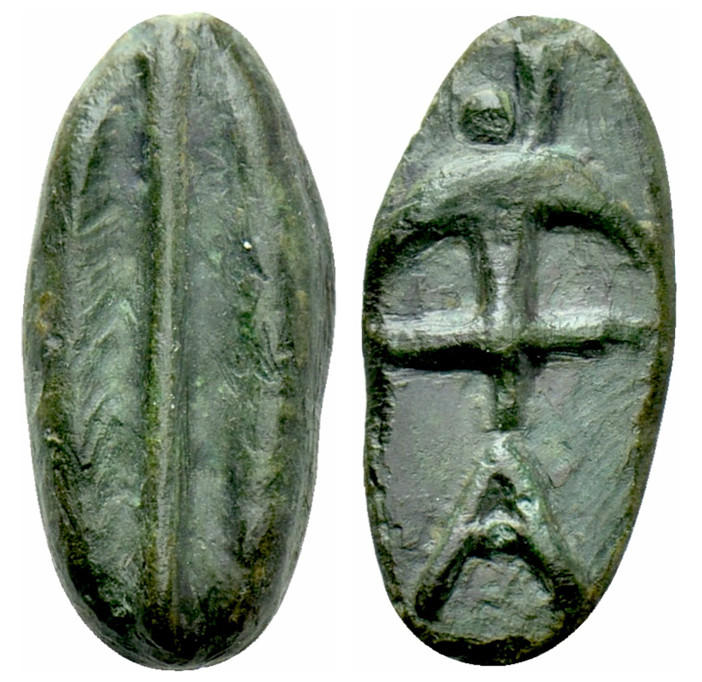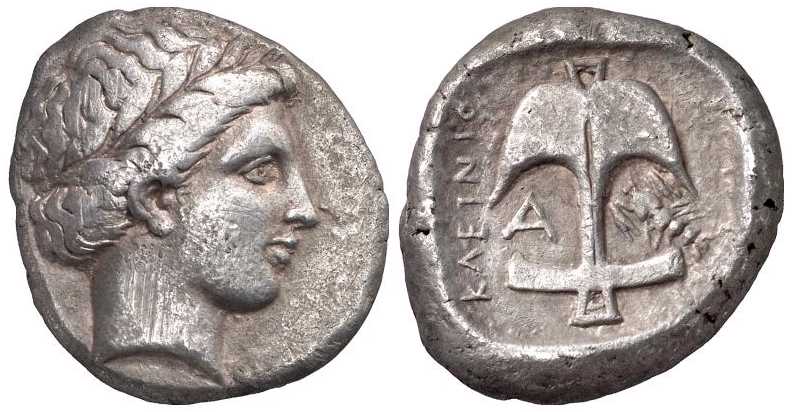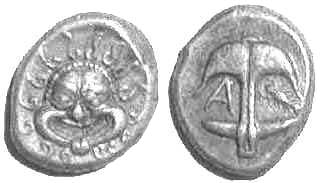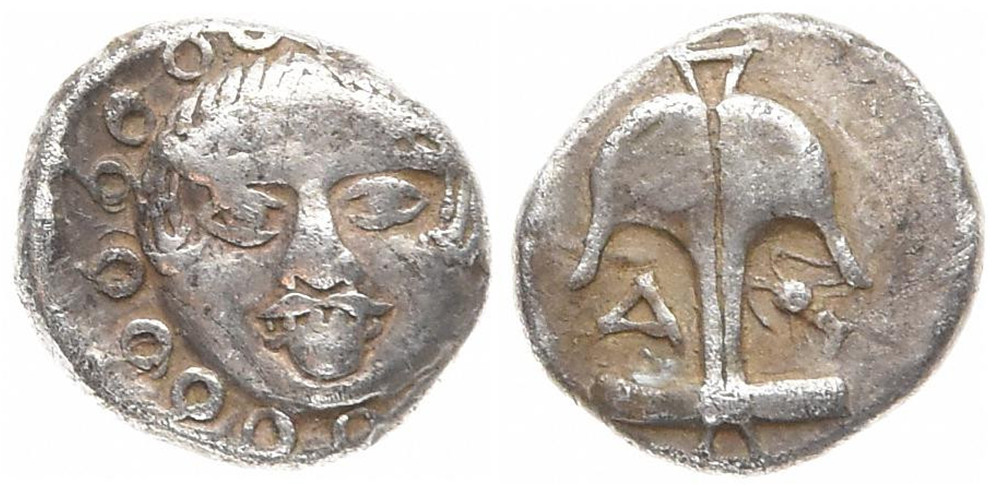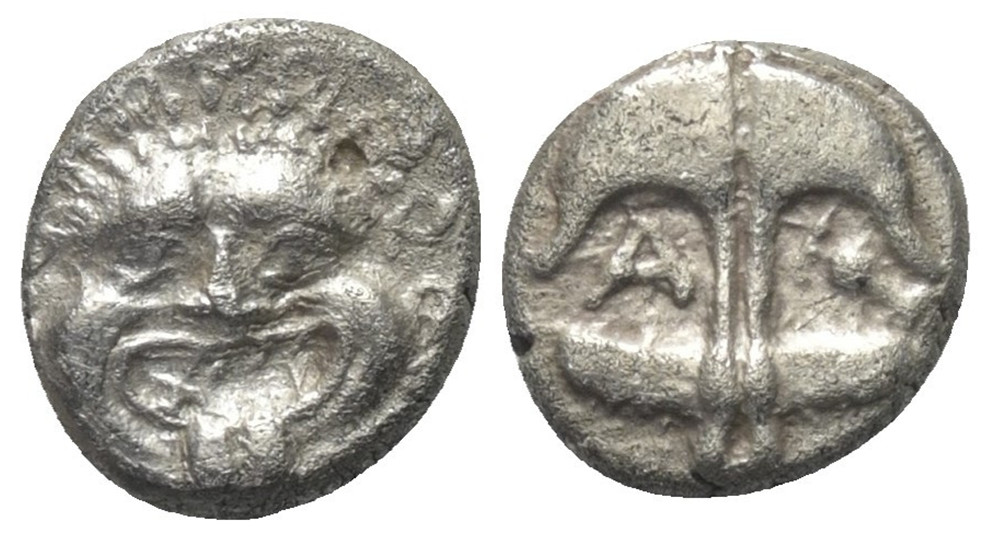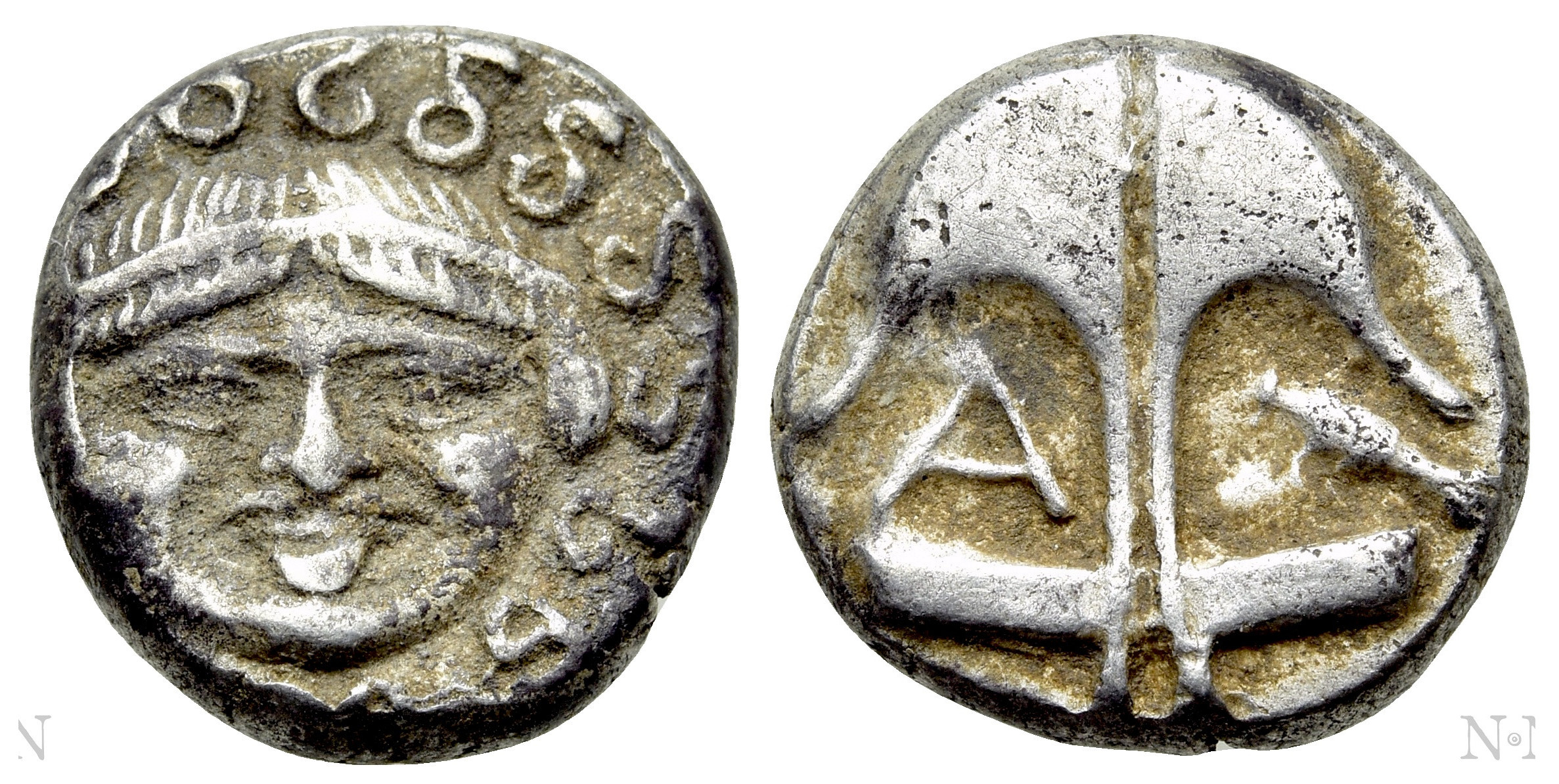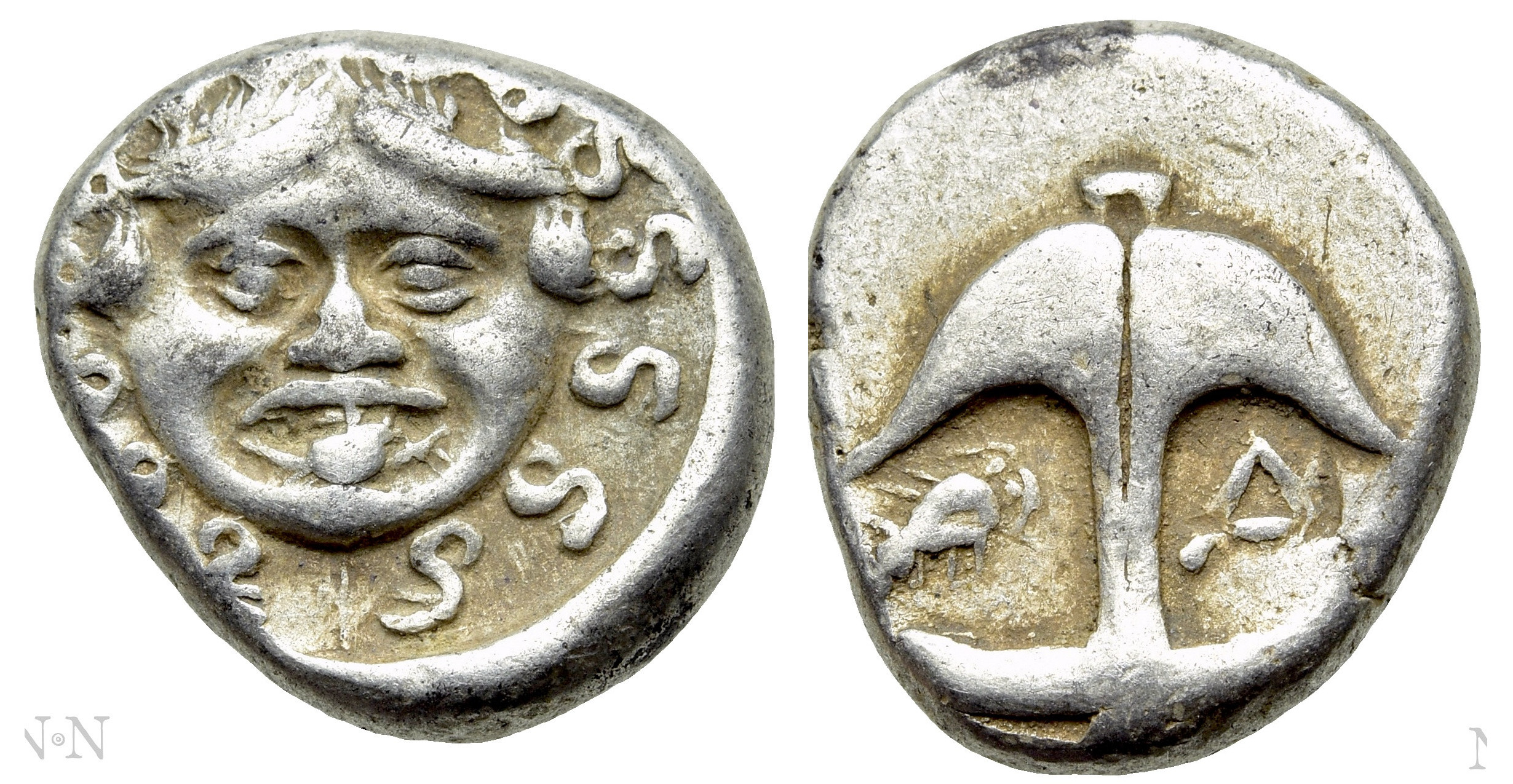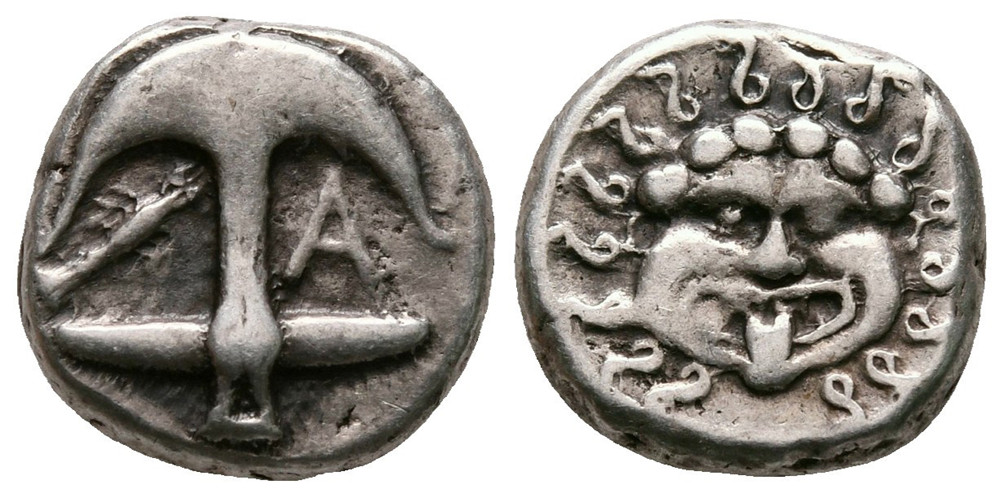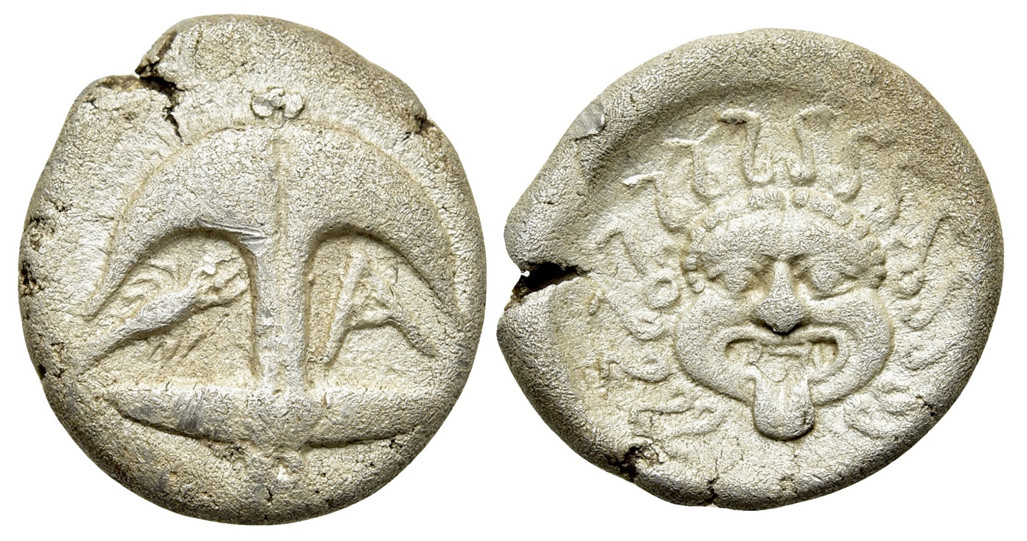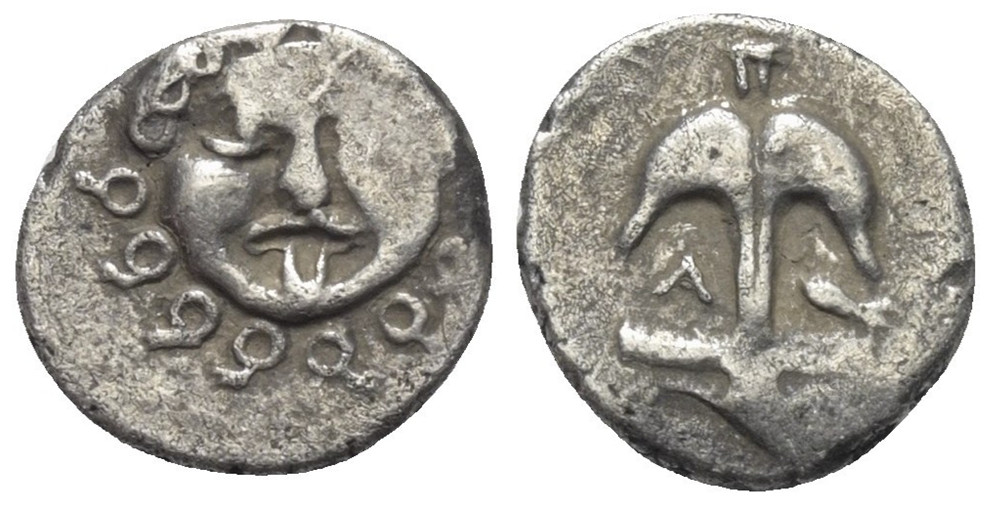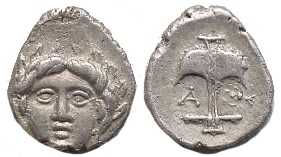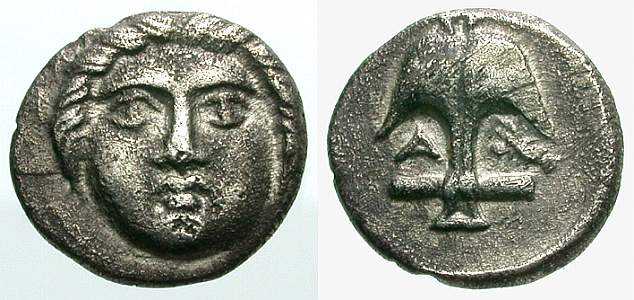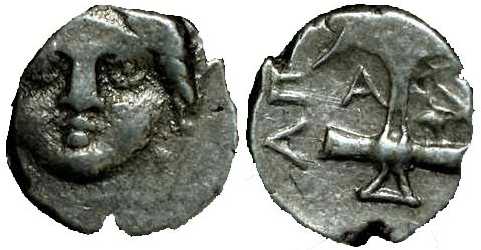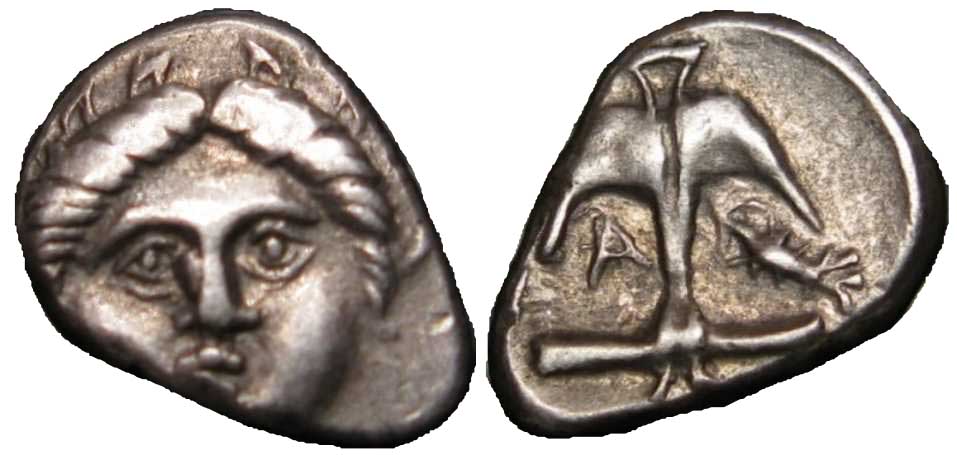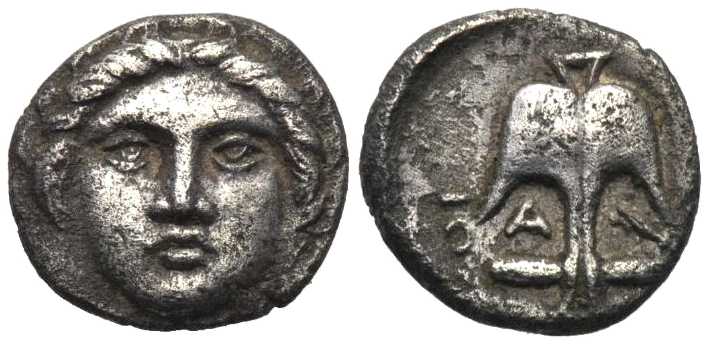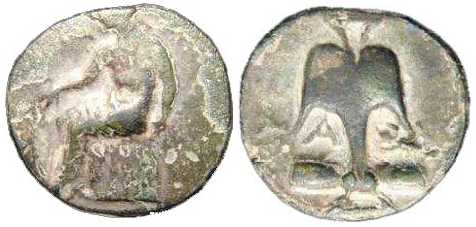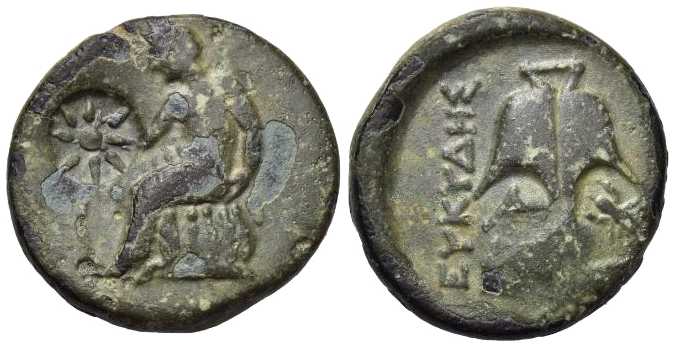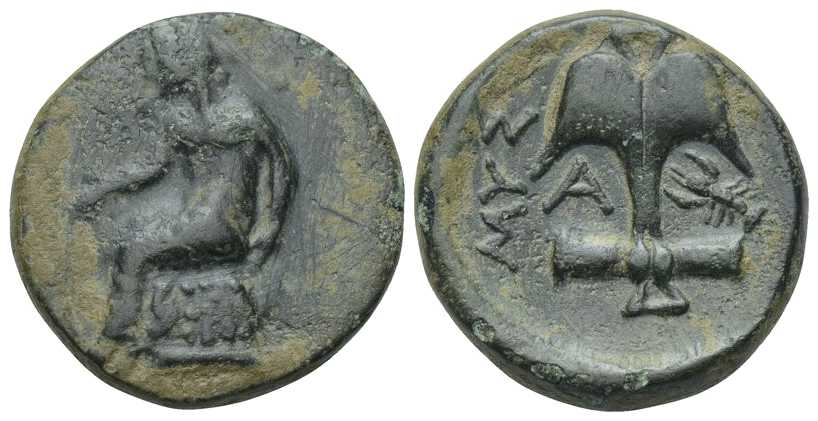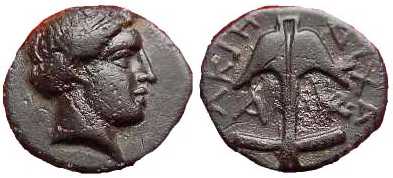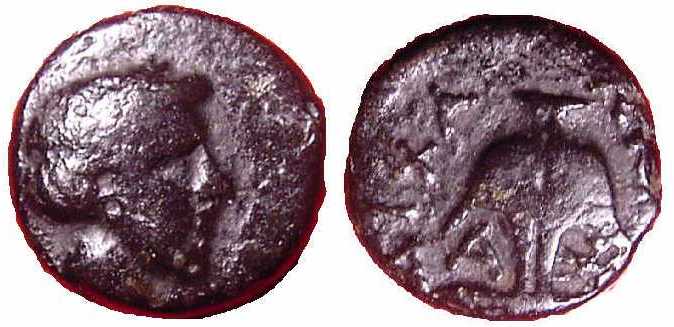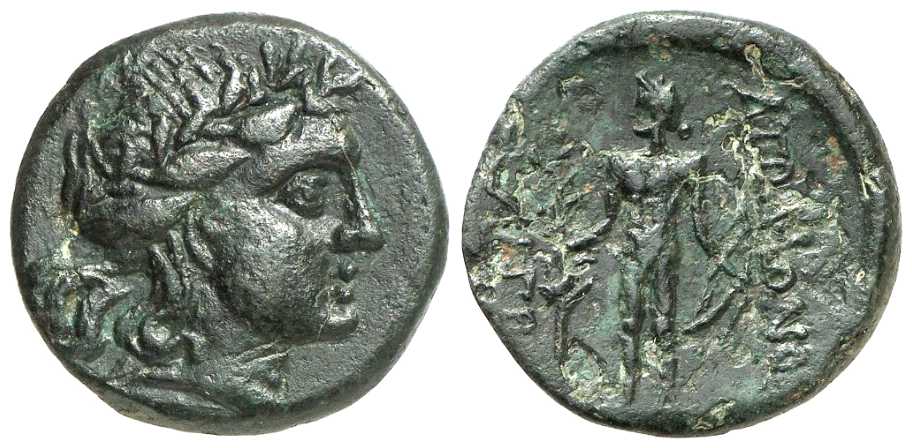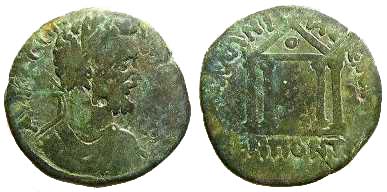|
Apollonia
Pontika (später Sozopolis) war
eine Kolonie von Miletos, gegründet um 600 v. Chr., mit zwei
geschützten Häfen
und einen Apollo Tempel. Es war det erste Hafen an der
Schwarzmeerküste nach der Pasage durch den Bosporus. Die Stadt
blühte im 5. und 4. Jh. v. Chr. Damals
gründete sie auch die kleine Stadt Anchialos. Im 3. Jh. v. Chr.
Beginnt ihre
Schwächung. Während der Kriege der Römer mit Mitradates
VI. stand Apollonia
fest auf Seite des Königs von Pontos. Daher wurde sie nach seiner
Niederlage
von Lucullus zerstört und ausgeplündert.
[Der kleine Pauly, Lexikon der Antike; dtv,
1979; Band 1, S.448-449]
Der
autonome Status von Apollonia sowie von Mesembria, Odessos, Kallatis und Tomis wurde nach der makedonischen Eroberung Thrakiens
durch einen Vertrag von Philipp II. anerkannt. Als Lysimachos sich 306/5 v. Chr. zum
König von Thrakien krönen ließ und weitere Diadochenkriege ausbrachen, ging Apollonia mit
den anderen vier Städten
an der westlichen Schwarzmeerküste einen Bund ein, die Pontische
Pentapolis. Im 3.
Jahrhundert v.
Chr. trat sie an Bedeutung endgültig hinter Mesembria zurück.
Der Streit mit
Mesembria über die Kontrolle der Salzminen in den Burgasseen führte im 2. Jahrhundert v.
Chr. zu einem Krieg, aus dem Apollonia als
Sieger hervorging.
74 v. Chr., während des Dritten
Mithridatischen Kriegs
(74–63 v. Chr.), ging
Apollonia Pontica, um seine Verteidigung zu stärken, einen Bund
mit dem pontischen König Mithradates
VI. Eupator und den Bessen ein. Dank dieses Bundes wurde
der erste Sturm der Römer auf die Stadt abgewehrt. 72 v.
Chr. erfolgte der zweite Angriff, diesmal unter dem neuen
römischen Prokonsul Makedoniens, Marcus
Terentius
Varro Lucullus.
Nachdem er die thrakischen Bessen geschlagen sowie die Städte Uscudama und Kabile eingenommen hatte,
zerstörte Lucullus Apollonia und
entführte die von Kalamis geschaffene Kolossalstatue des
Apollon nach Rom, wo sie auf dem Kapitol als Trophäe aufgestellt
wurde.
Nachdem Apollonia unter
römische Herrschaft
gekommen war, ging seine Rolle zu Gunsten von Deultum und Anchialos zurück. Die Stadt wurde
zunächst dem thrakischen Odrysenreich unterstellt, das zu diesem
Zeitpunkt römisches Protektorat war. Nach dem
Ende des Thrakerreiches wurde Apollonia in die römische Provinz
und spätere
Diözese Thrakien eingegliedert.
[Wikipedia; https://de.wikipedia.org/wiki/Apollonia_Pontica#Geschichte;
5.7.2023]
The silver coinage of
Apollonia begins in the 6th c. BC with a series of drachms struck to
the Attic standard of ca. 17.2 g to the tetradrachm and featuring an
anchir and
creyfisch on the obverse and a swastika device on the reverse.
However,the
Attic standard seems to have been abandoned fairly quickly in favor of
what
of what has been described as a light Traco-Macedonian standard of ca.
14.7 to the tetradrachm simlat to that used by Greek cities
in
southern Thace. Apollonia struck an extensive coinage of drachs and
fractions
through the 5th c. BC. Early issues Early issues
cintinued the the
types of the preceding Attik-weight seriers pairung the anchor abd
crayfisch
badge with the facing head of a grgoneion. In the late 5th
or the
beginning of the 4th c. Bcthe Attik standard was
reintroducedfor a
new coinage of Tetradrachms and fractions featuring the head of Apollo
on the
obverse and the anchor and crayfish on the reverse. This series was
produced
into the 3rd quarter of the fourth c. BC, after which
the civic
siler mint fell silent.
The anchor and
crayfish/gorgoneion drachms and the Apollo (anchor and crayfish diobols
became
somewhat notorious at the end of the20th
c. thanks to two large “hordes”
consisting of thousands of forgeries disbursed at the New York
International
Convention in 1889 and 1899. Many of the forgery dies have been
identified and
are discussed in detail online at http://medusacoins.reidgold.com/newyork.html
(drachms) and
http://www.snible.org/coins/black_sea_hoard.html
(diobols)
[Oliver D. Hoover; The
Handbook of Greek Coinage, Volome 3, Coins og Macedon and Its
Neighbors,
Part II:
Thrace, Skythia, and
Taurike; Classical Numismatics Group,
Lancaster/London 2017. p. 50-51]
|

